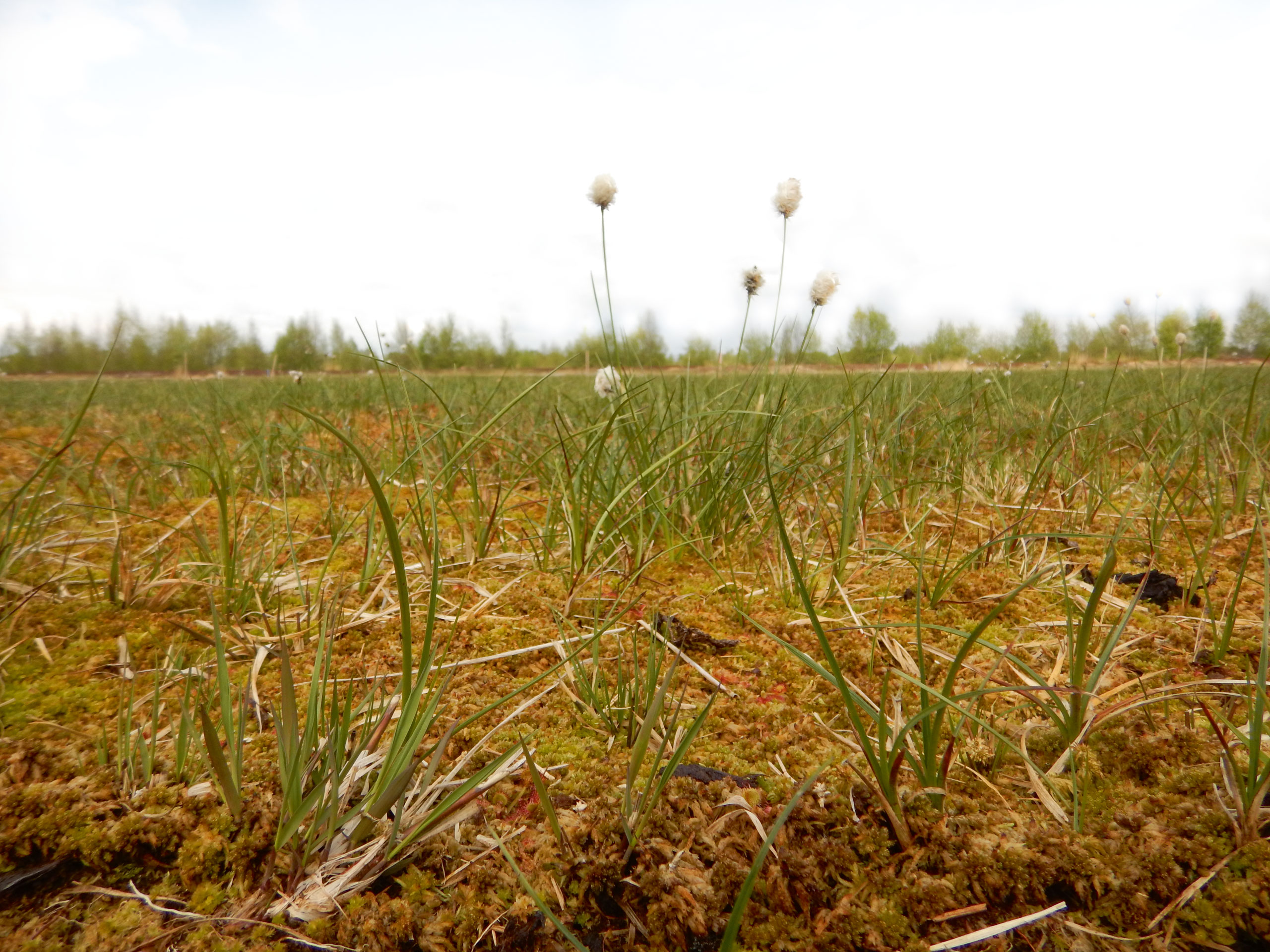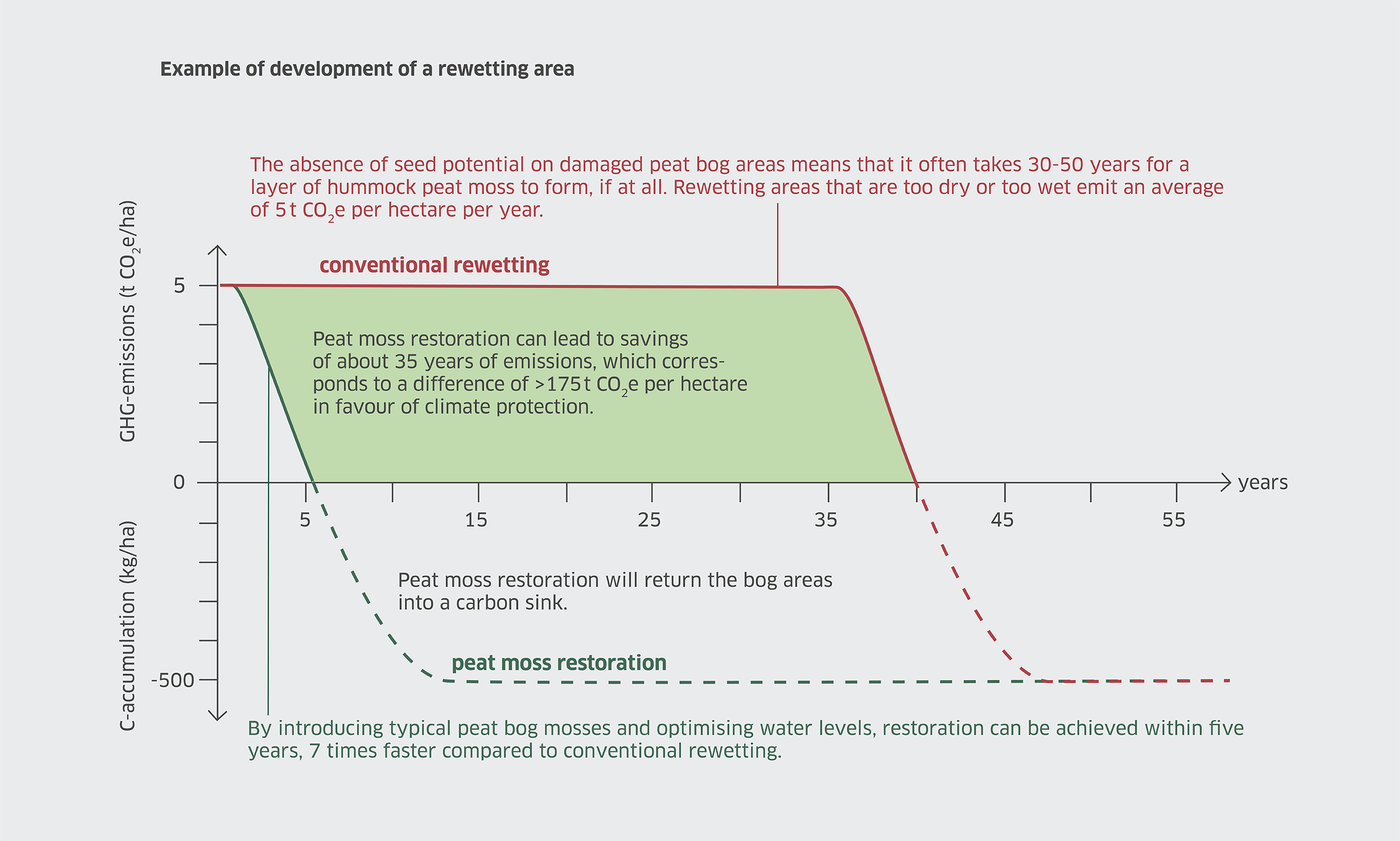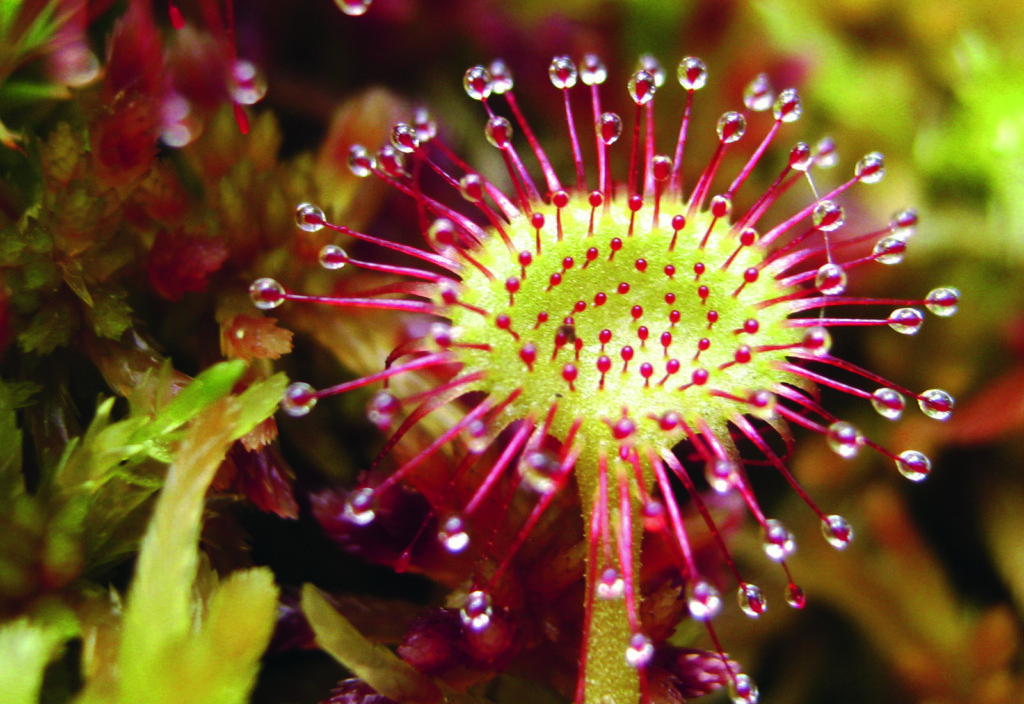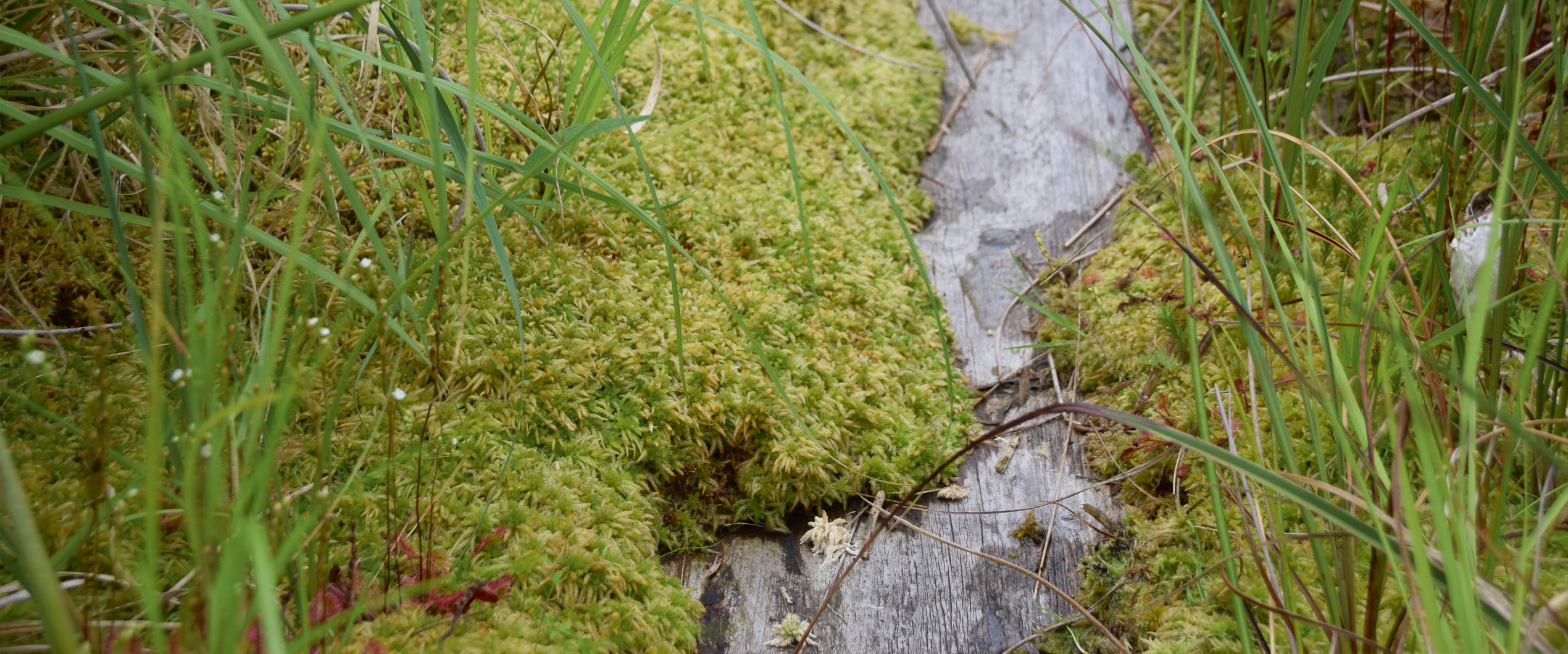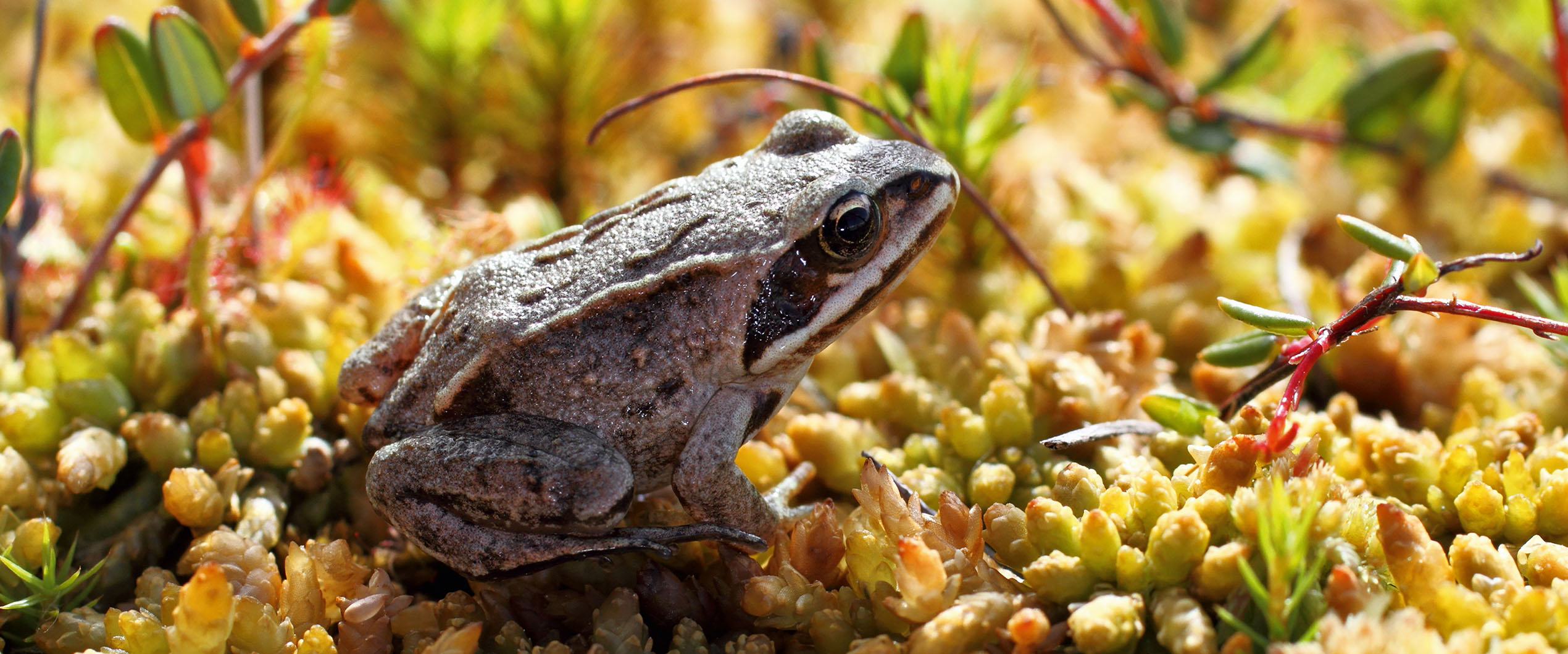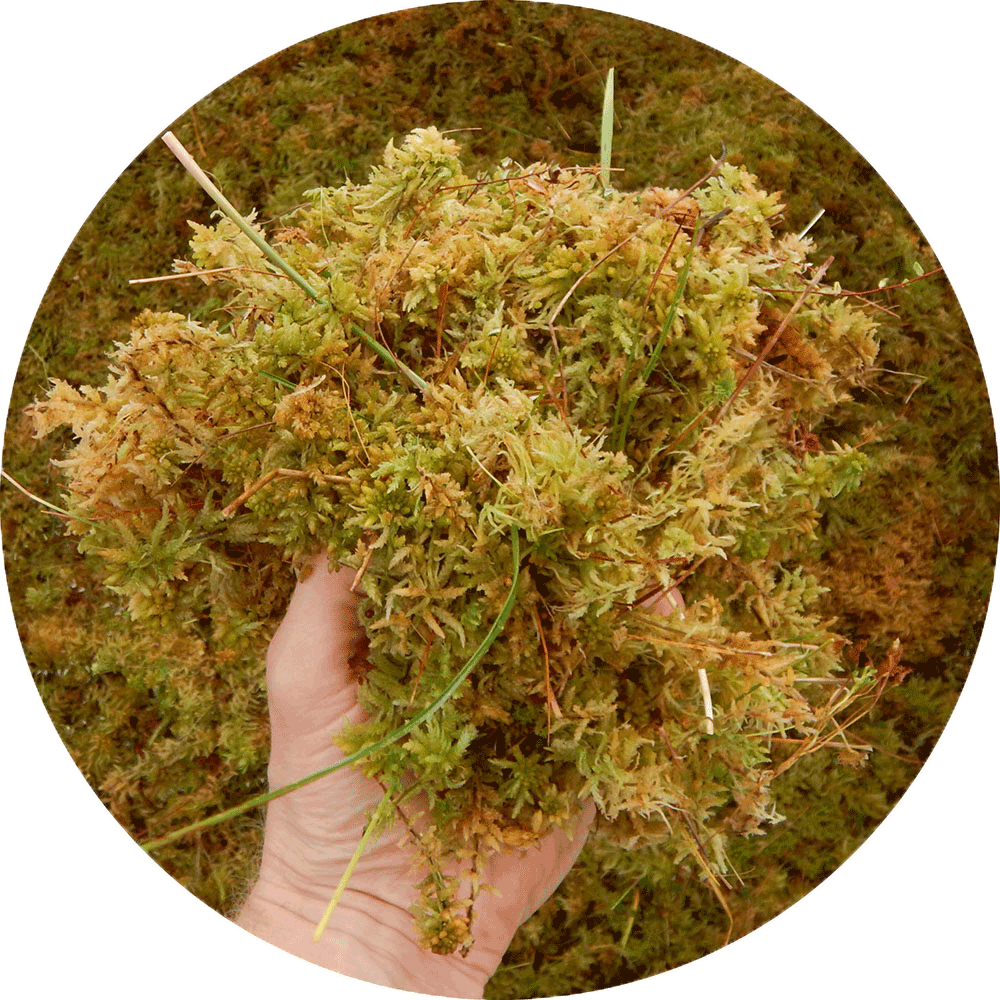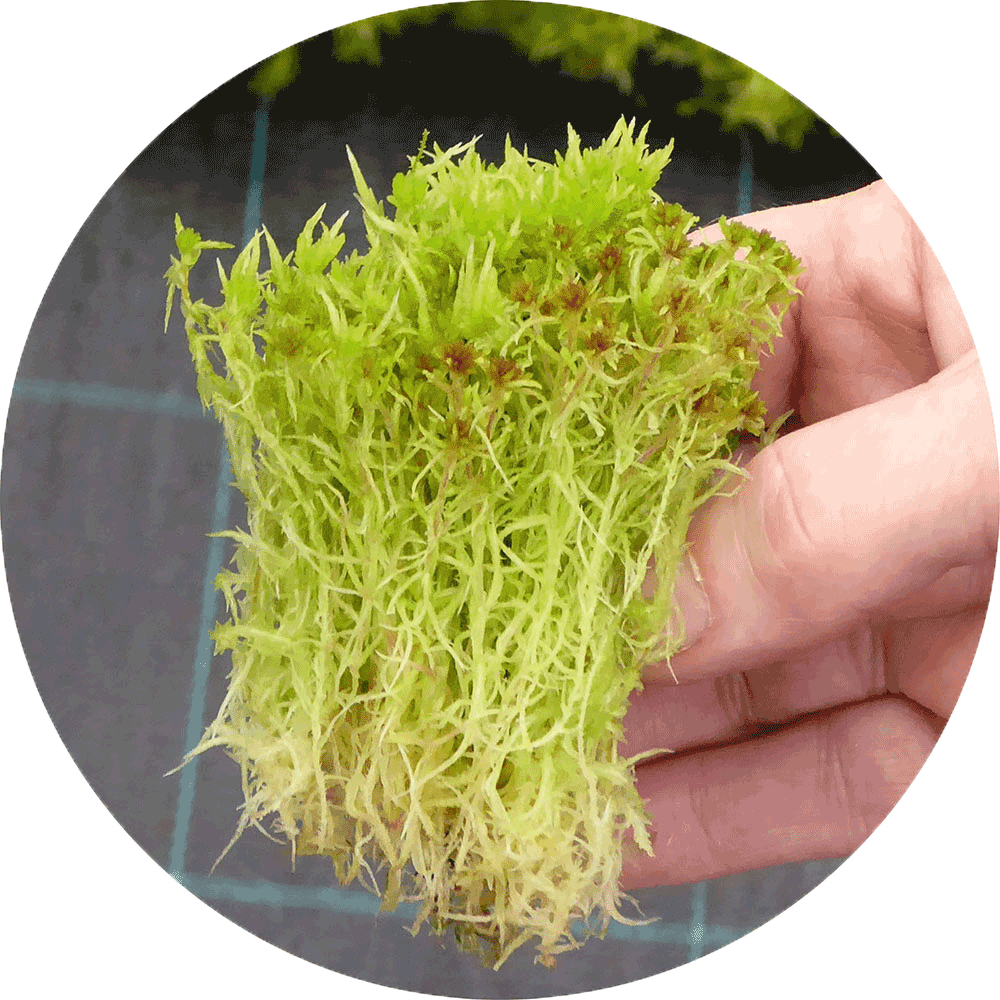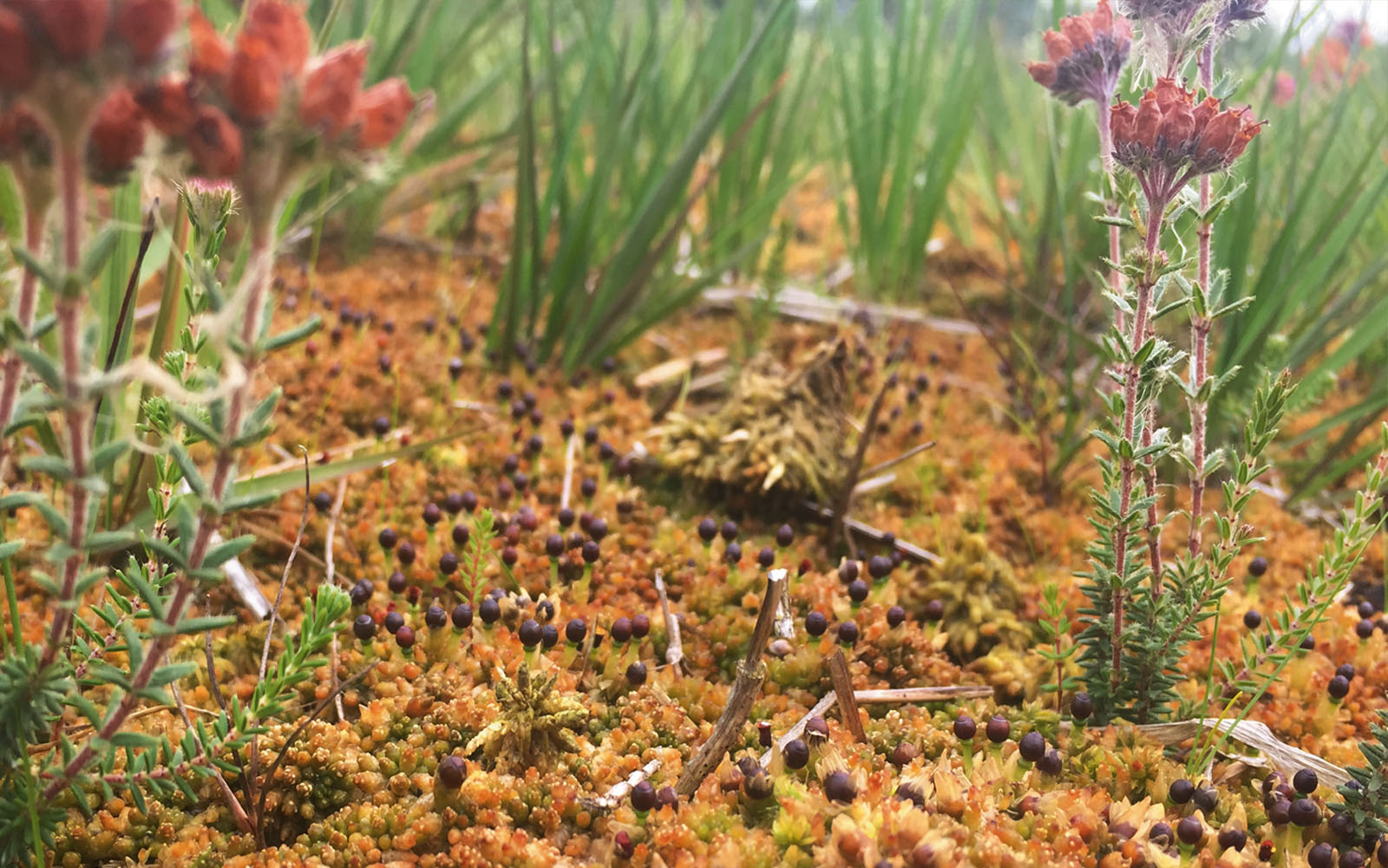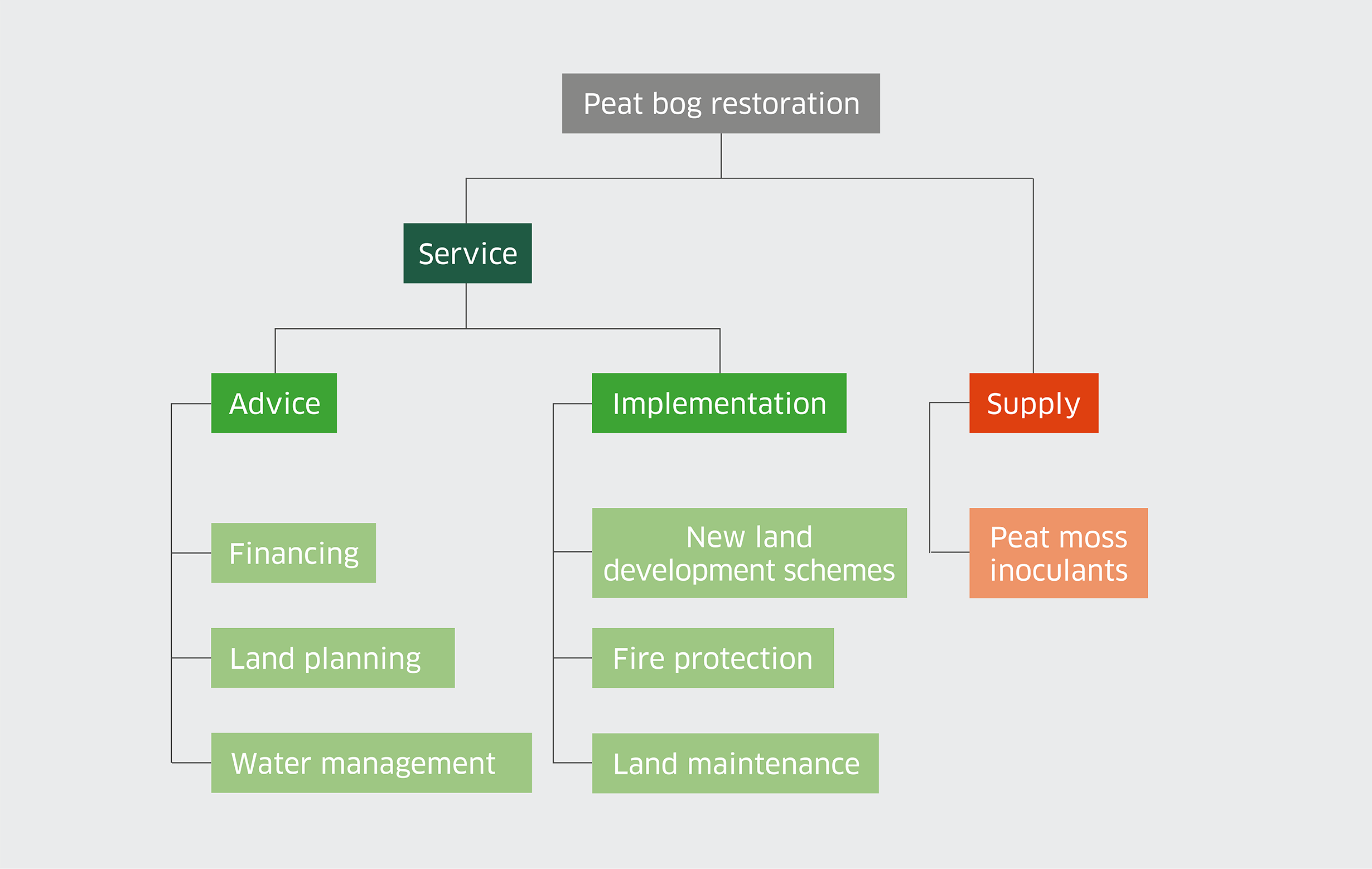Restoration of peat bog areas with peat mosses – Innovation for climate protection and biodiversity
Peatlands & rewetting
The majority of German peatland sites are no longer in a natural state, due to human intervention. In contrast to their original function as carbon sinks, these areas in Germany currently release 43.8 million tonnes CO2 equivalent (CO2e) per year. This corresponds to 4.6% of German greenhouse gas emissions1. In Lower Saxony, peatland areas alone account for around 12.7% of total emissions. Peat extraction and use account for only a small proportion of these greenhouse gas emissions. In Lower Saxony, they are responsible for 1.7% of emissions1; nationwide, the figure is a mere 0.2%2.
To restore degraded peat bogs to their natural state – after peat harvesting has ceased, for example – the sites are typically rewetted and the natural
process of colonisation allowed to take its course. This can often take decades, or in many cases doesn’t happen at all.
In addition to the absence of seed potential, over half of all rewetted areas are either too dry or too wet and as a result there is little prospect of them returning to a living peat bog. Most typical bog species such as peat-forming hummock mosses and other typical vascular plants, such as white beak-sedge, are unlikely to establish independently. Rewetted, semi-natural areas remain sources of greenhouse gases; in 2013 they emitted 193.000 tonnes CO2 equivalent in Lower Saxony3.
Peat bog restoration
Restoration of degraded peat bogs can be accelerated by introducing typical raised bog vegetation such as peat-forming hummock mosses (Sphagnum spp.) and carefully adapted water management techniques.
This innovative process can help establish typical peat bog vegetation and achieve positive climate effects at least 30 years earlier than can be attained by using traditional rewetting methods. The resulting ecosystem services can be assessed and, in the form of Ecopoints (Germany) or climate certificates, compensation received for these services.
Ecosystem services
Restoring degraded bogs with peat moss encourages the settlement of typical bog flora and fauna and the accelerated re-establishment of rare and protected biotope types.
How we proceed and what advantages this has
- Hydrological evaluation of the area and professional preparation of the site
- Ensuring optimal irrigation and maintenance of areas
- Harvesting moss from our own peat moss bank or sustainable reproduction in a greenhouse
- Placement of peat moss fragments and accompanying vegetation where appropriate
- Coverage of various types of peat moss in a short period of time
Additionally, with summers becoming increasingly dry, peatland restoration will play a key role in fire prevention.
- Preservation of the peat body
- Prevention of peat decomposition
- Creation of a carbon sink
- Establishment, within 5 years, of climate neutral peat moss areas, 35 years earlier than current techniques allow
- Savings of 175 t CO2 per hectare over at least 35 years (equivalent to the CO2 sequestration of 1750 trees)
- Lower emissions of methane and carbon dioxide greenhouse gases
Creation of habitats for endangered and protected species, such as:
- Hunting grounds for amphibians (e.g. moor frog)
- Breeding areas for ground nesting birds (e.g. Northern lapwing)
- Environments for many species of insects and spiders
- Nectar plants for butterflies (e.g. Silver-studded blue)
- Immediate increase in biodiversity of typical peat bog vegetation (e.g. sundew & cotton grass)
Peat moss inoculants
Due to the rarity of pristine peat bog habitats in Germany, one of the major problems lies in getting hold of source material for inoculation. Klasmann-Deilmann cultivates protected peat mosses in their own peat moss bank (open field site) and using peat moss grown in a greenhouse environment.
This means we no longer need to access natural or semi-natural peatland areas to obtain inoculants. Either individual species or a mixture of species can be provided, depending on the client’s wishes. Regional peat moss varieties can also be propagated for specific requirements.
- Raised bog open field cultivation
- Seven peat moss species available
- Sites are colonised directly with flora and fauna (up to 40 plant species, usually those typical of raised bogs, plus a variety of insect and spider species)
- 20 Sphagnum (peat moss) species are available
- Targeted greenhouse propagation of native, local origin species
- Pure Sphagnum moss without unwanted flora and fauna
- Plants establish quickly as they have been pre-cultivated
- Without intervention that affects natural peatlands
Our services at a glance
- Advice on finance options, land planning and water management
- Complete implementation and maintenance of new land development schemes
- Supply of peat-forming hummock peat moss from a range of sources
References
1Niedersächsisches Ministerium für Umwelt, Energie und Klimaschutz (2016). Programm Niedersächsische Moorlandschaften – Grundlagen, Ziele, Umsetzung (Lower Saxony Moorlands Programme – Basics, goals, implementation), p. 9, 32
2Umweltbundesamt (2014). Berichterstattung unter der Klimarahmenkonvention der Vereinten Nationen und dem Kyoto-Protokoll 2014. – Nationaler Inventarbericht zum Deutschen Treibhausgasinventar 1990-2012 (National Inventory Report on the German Greenhouse Gas Inventory 1990-2012) – Climate Change 24/2014, p. 847
3Höper, Heinrich (2015). Treibhausgasemissionen aus Mooren und Möglichkeiten der Verringerung (Greenhouse gas emissions from peatlands and ways to reduce them), TELMA Beiheft 5, p. 146
